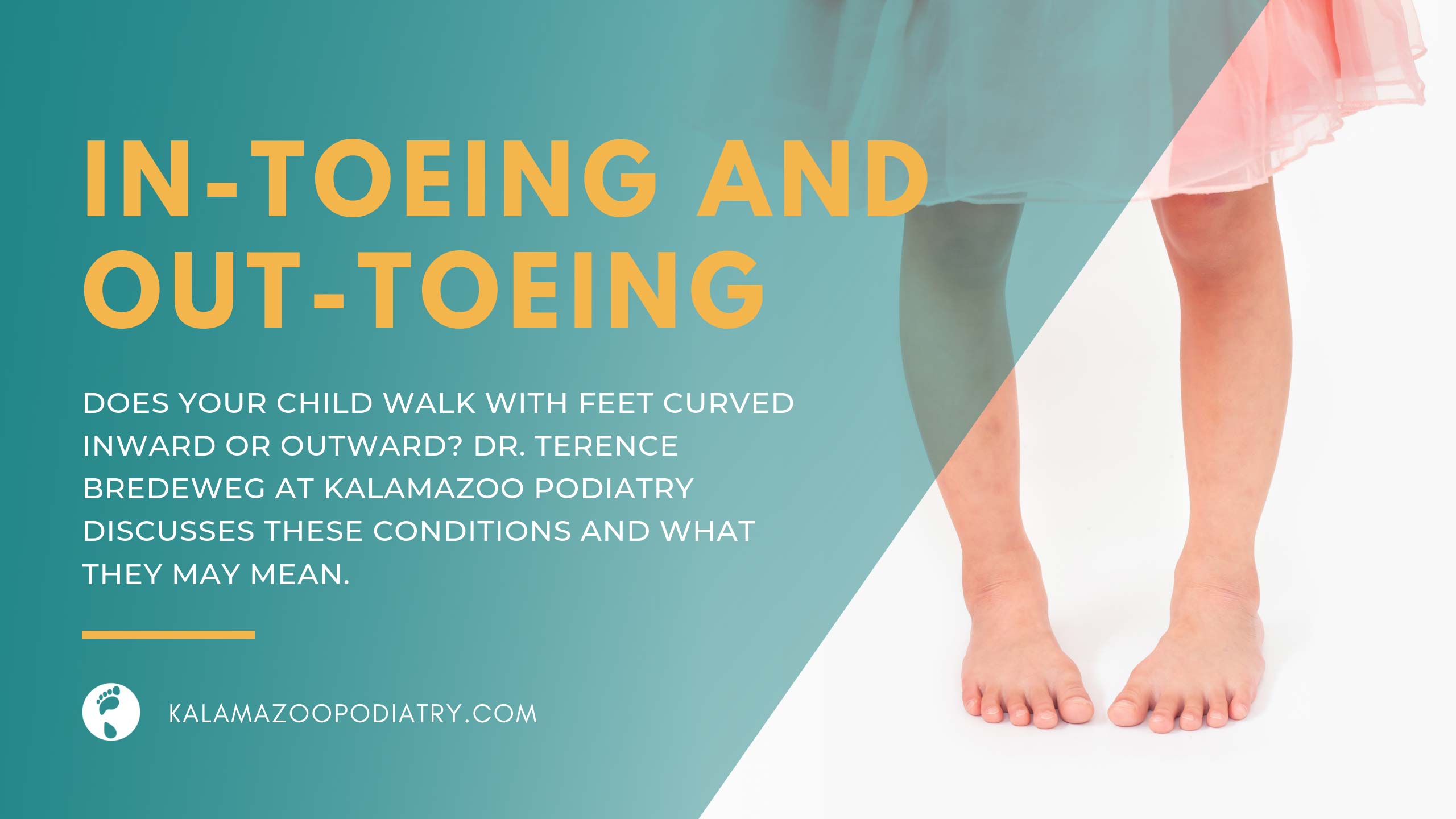In-Toeing and Out-Toeing
When you are watching your child walk, you are naturally also focused in on how they are walking. And if something doesn’t quite seem right, you might become alarmed at what you see.
If you see your child walking with their feet turned inward (in-toeing) or outward (out-toeing), you may naturally have concerns about what this might mean for them now and into the future. We absolutely understand the worries of parenthood, and that’s why we are here to provide parents and their children everything they need to know.
What is Causing My Child’s In-toeing or Out-toeing?
There are several specific factors that might cause either of these conditions, but most of them involve a slight rotation of the bones in the upper or lower leg.
Internal tibial torsion is when the lower leg, or tibia, twists inward. This may happen before a child is born as a child’s legs rotate to fit within the tight space of the womb.
Femoral anteversion is when a child’s thighbone, or femur, turns inward, giving the upper end of the thighbone an increased twist.
Metatarsus adductus is when the feet themselves curve inward or outward.
Regardless of which condition is present, it should be noted that you as parents had nothing to do with causing any of them. These are common conditions and, in many cases, do not prove to be anything to worry about.
What Should I Do if My Child is In-Toeing or Out-Toeing?
The good news with most in-toeing and out-toeing conditions is that they will naturally correct themselves with time.
Learning to walk also means developing the muscles and motor skills necessary for doing so. As these systems grow stronger, abnormalities tend to straighten out as well.
So if you begin to see signs of in-toeing or out-toeing in your toddling child, do not panic. Many other parents have seen this and in a great many cases the problem was resolved on its own.
However, it is also important to not just ignore the condition, either. While most cases will resolve themselves with time, there is also a possibility of additional factors being at play.
Please be sure to let us know if you see in-toeing or out-toeing in your child. Your child’s development should be regularly monitored to ensure it is moving along normally. If any concerns are discovered, they can be addressed quickly to greatly reduce the risks of chronic problems in the future.
You should also contact us promptly if your child is experiencing pain as part of their in-toeing or out-toeing, as this should not be expected.
The Best in Attention and Care for Your Child
A good parent keeps the welfare of their child in mind, but we don’t want you feeling panicked about in-toeing or out-toeing. By keeping track of this condition early on, we can help ensure that any potential problems get taken care of or mitigated as best as possible, letting your child grow up to walk, run, and move to the best of their ability!
Call Kalamazoo Podiatry at either of our offices:
- Kalamazoo – (269) 373-1019
- Allegan – (269) 673-8757
Or, if you prefer to contact us electronically, fill out our online contact form to have a member of our staff reach out to you.
© Kalamazoo Podiatry. All Rights Reserved. | Privacy Policy
Web Design by CP Solutions. Marketed by VMD Services.

